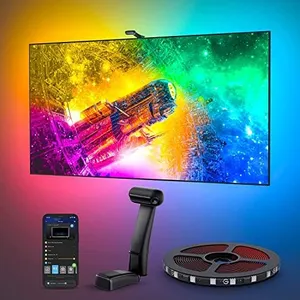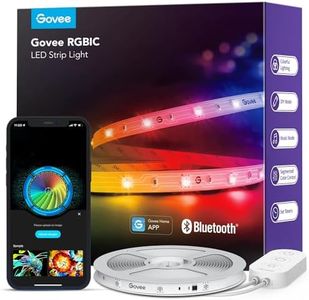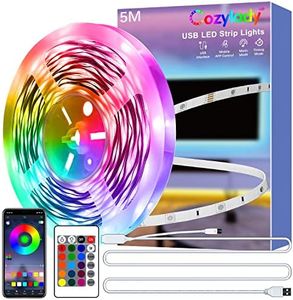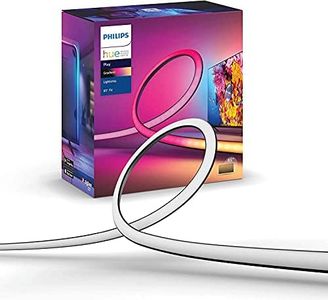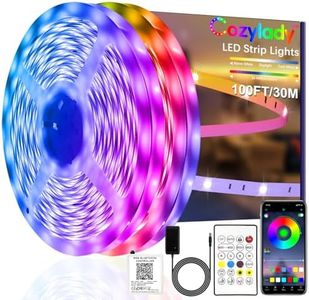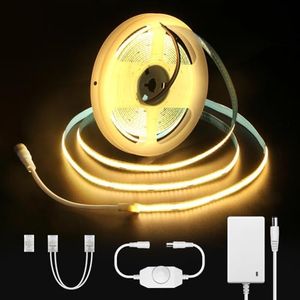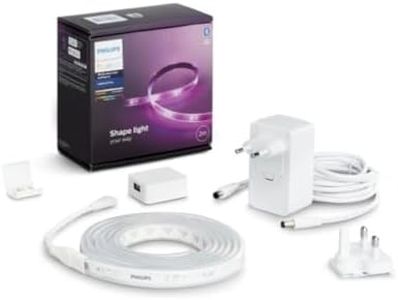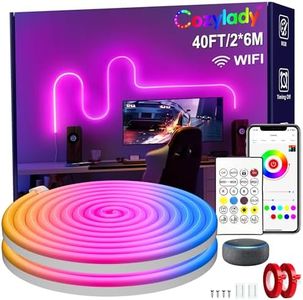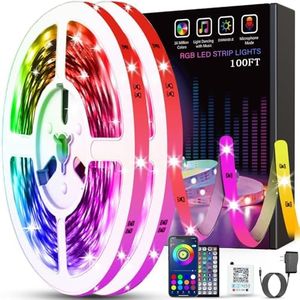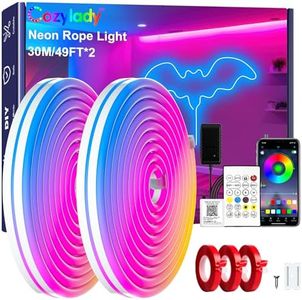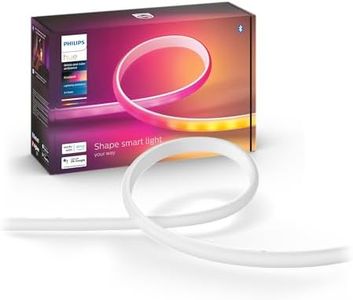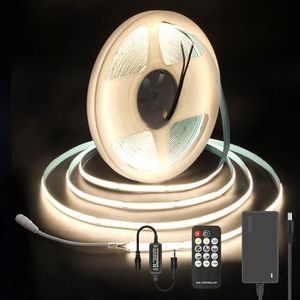We Use CookiesWe use cookies to enhance the security, performance,
functionality and for analytical and promotional activities. By continuing to browse this site you
are agreeing to our privacy policy
10 Best LED Strips
From leading brands and best sellers available on the web.Buying Guide for the Best LED Strips
Buying LED strips can really transform your space, whether you want to add mood lighting to a living room, brighten up your kitchen, or create an eye-catching gaming area. Because LED strips come in a huge variety of options, it's important to understand the key features to help you find the best fit for your needs. Think about where you want to install them, what kind of effects or colors you want, and how you'll control the lights once they're set up.Brightness (Lumens)Brightness tells you how much light the LED strip will actually produce, and it's measured in lumens. It's important because it directly affects the mood and usefulness of your lighting. For accent lighting or soft mood effects, lower lumens are enough, while task lighting or under-cabinet use needs higher brightness. LED strips usually range from about 150 lumens per meter for gentle ambiance, up to 600 lumens per meter or more when you need to really illuminate a space. Think about your purpose: subtle light for decoration, or powerful illumination for tasks? That will guide how bright your strips should be.
Color Type (Single Color vs. RGB vs. RGBW)This feature describes what colors the strip can produce. Single color strips give just one consistent hue, like warm white or cool white, which is great for functional lighting. RGB strips can show any color by combining red, green, and blue—perfect for creating colorful moods or party effects. RGBW adds a separate white LED for better true white lighting in addition to color. If you only want basic lighting, single color is simple; if you want to experiment with colors, go for RGB; and if you need both high-quality white light and lots of color options, RGBW is the way to go.
Control Method (Remote, App, Voice)Control method describes how you interact with your LED strip once installed. Some strips use a simple remote, others link to smartphone apps via Bluetooth or Wi-Fi, and some are compatible with smart home systems for voice control (with Alexa or Google Assistant). Remotes offer quick and easy control, apps provide more features and scheduling, and voice control makes hands-free operation possible. Consider how tech-savvy you are and how you want to interact with your lighting day-to-day to pick the control method that fits your lifestyle.
Water Resistance (IP Rating)The IP rating tells you how well the LED strip can handle water and dust. If you’re putting lights in dry, indoor spots, any rating will do. For kitchens, bathrooms, or outdoor areas, look for higher ratings (like IP65 or above) to avoid damage from humidity, splashes, or rain. Think about where you’re installing the strips: only indoors away from water needs basic protection, but bathrooms, kitchens, and outdoor installations require water-resistant or waterproof versions.
Length and CustomizabilityLength is important because you want your strip to fit your space without being too short or overly long. Some strips can be cut to a custom length at certain points, and others let you connect extra strips for longer runs. Measure your installation area carefully, and make sure the strip can either be trimmed or extended as needed so you end up with a seamless look.
Power Source and VoltageLED strips need power to work, and they come in different voltage options (commonly 12V or 24V). Some plug directly into a wall outlet, while others run off USB or require a dedicated power adapter. Higher voltage strips are better for longer runs with less power drop. Where you want to install them and what nearby power sources are available should help guide you to the right type—make sure you choose a safe and convenient option for your space.
Adhesive Backing and InstallationAdhesive backing is how the strip sticks to surfaces, usually with peel-and-stick tape. Good adhesive makes installation quick and easy, while poor adhesive can cause strips to fall over time. For challenging surfaces, look for strips that come with extra mounting clips or choose a type known for reliable sticking power. Think about your walls, cabinets, or ceilings: smooth and clean surfaces are easiest, while rough or damp areas may need stronger mounting solutions.
